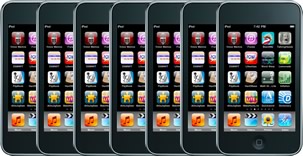Google Apps. www.google.com/a/edu This set of tools is a must. You have email, calendar, Google Docs, blogger, Picasa, sites, video, and more. Not to mention many additional free add-ins from the apps market place including Easybib, Engrade and more. If you are not a Google Apps school, you should be asking the questions "Why Not"!
Google Chrome. http://www.google.com/chrome This web tool along with it's extensions and Chrome web store brings a whole new set of resources to students and staff. The extensions and apps make this a must. And with Google Apps, it just works better. (Imagine that.)
Dropbox.com https://www.dropbox.com/ I know Google Apps gives you 1 gig of non-Google files... but dropbox gives you more, and a great set of tools for the computer, phone, web and more. They even have a great Google Chrome extension.
Evernote. http://evernote.com/ This is a great tool for keeping notes, gathering research information, clipping web sites and more.
Diigo. http://www.diigo.com This not only allows students to bookmark sights, but you can highlight and make notes on those sites.
Prezi http://prezi.com/ or 280Slides http://280slides.com/ Offer some great online presentation tools. SlideRocket is a must if you are a Google Apps school. This free service will have you wondering why you ever used PowerPoint.
Animoto http://animoto.com/education Animoto takes your pictures, turns them into Videos and makes people think you spent hours instead of minutes. Great tool for you and your classes.
Pixlr http://pixlr.com/ and Picnik http://www.picnik.com/ make online photo editing a breeze. And many people do not know about PhotoShop Express online , it has some great features too!
Some great lists of Web 2 tools:
Go2web20 has a great list of web 2 tools: http://www.go2web20.net/
A couple great lists: http://cooltoolsforschools.wikispaces.com/ and another great list contain collections of Web 2.0 tools and sites
Ultimate Web 2.0 list. Large list of web 2.0 tools listed alphabetically
A list of the best from Richard Byrne and Richard Byrne's site





